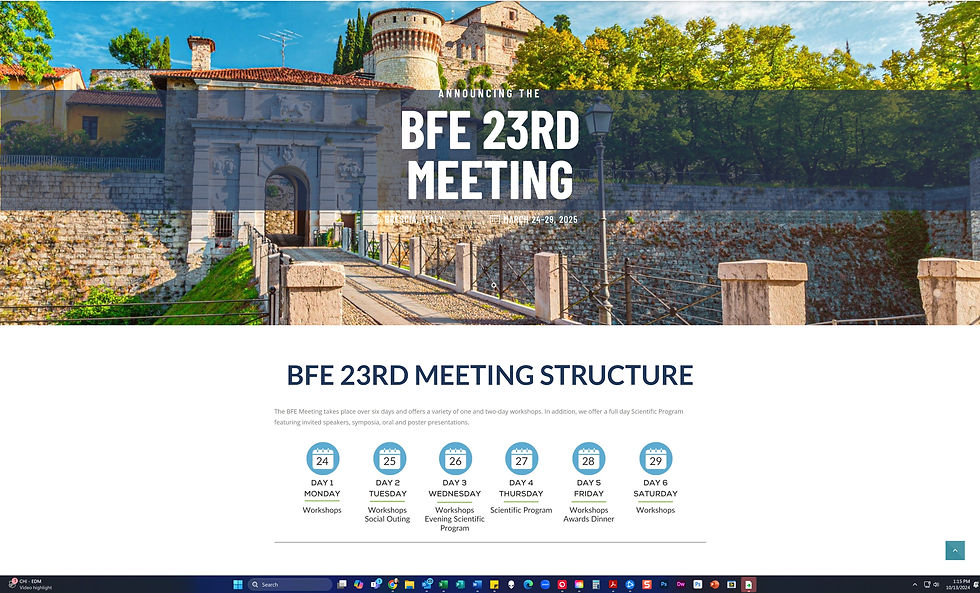
The article titled "Heart Rate Variability Biofeedback Intervention Programme to Improve Attention in Primary Schools" explores the relationship between heart rate variability (HRV) biofeedback interventions and attentional improvement in children aged 7 to 12.
This study is rooted in the idea that attentional capacity, crucial for academic success, can be enhanced through biofeedback techniques focused on slow, paced breathing. Given the developmental improvements in attention during primary school, this research examines whether such interventions can foster better attention in children and how these improvements vary across different age groups.
Key Findings
The study found that HRV biofeedback training significantly improved attentional capacity, particularly in younger children.
By teaching children to regulate their breathing, they increased their HRV, which correlated with enhanced performance on attention tasks.
The impact of biofeedback was most notable in the youngest group of students (ages 7-8), suggesting that earlier interventions may yield better results.
The program also demonstrated that HRV, as a physiological marker, could be reliably influenced by teaching slow breathing patterns and that this influence is linked to cognitive improvements such as attention.
HRV Biofeedback Improves Attention
The study involved 586 primary school children, divided into experimental and control groups, with three age sub-groups (7–8, 9–10, 11–12 years). The experimental group participated in a biofeedback program comprising five individual heart rate variability (HRV) training sessions where they practiced slow, controlled breathing. Heart rate data were captured using the HeartMath EmWave software, which measures real-time HRV.
Experimental Group
The experimental group’s training involved five individual sessions of HRV biofeedback, where students learned to regulate their breathing to increase HRV. The training was delivered using the HeartMath EmWave software, which provides real-time feedback on HRV through a sensor placed on the participant's earlobe. Students were guided to achieve a breathing rate of approximately six breaths per minute, a rate known to maximize HRV and promote relaxation.
The first session introduced the students to the training program and the biofeedback equipment. The remaining four sessions focused on helping students practice slow-paced breathing to make deep, controlled breathing a habitual response in stressful situations. By observing the immediate effect of their breathing on HRV through visual feedback, students learned to modulate their physiological state. The training emphasized the practical application of this skill in daily situations where students might feel anxious or unfocused, encouraging them to use this breathing technique to calm themselves and improve concentration.
Control Group
The control group did not receive any HRV biofeedback training. These students continued their regular school activities without intervention. The control group’s attention was assessed using the same d2 Test of Attention as the experimental group, both before and after the intervention period, to provide a comparison of attention levels without the influence of biofeedback training.
Results
The study's attention measure, the d2 Test of Attention, was administered before and after the intervention. Results showed significant improvements in the experimental group’s attentional performance post-intervention. Particularly, children in the first age group (7–8 years) showed the greatest improvement, while older children demonstrated more modest gains. Younger children in the experimental group not only caught up with but also surpassed their peers in the control group regarding attention performance. In comparison, older children showed less pronounced but still positive effects.
Analysis
No-treatment controls are weak, lacking an active treatment's demand characteristics. The phrase, deep breathing, should be discouraged because it can promote CO2 loss due to overbreathing.
Conclusion
The HRV biofeedback intervention significantly improved attentional capacity in children, especially among younger students. This finding suggests that early interventions focusing on physiological regulation, like controlled breathing, can be particularly beneficial in enhancing attention-related cognitive skills. However, the study also highlighted limitations, such as the non-random selection of some participants, which may affect the generalizability of the results. Nonetheless, this biofeedback approach shows promise for helping children manage their attentional demands in school.
Open-Access Article
Aranberri Ruiz, A., Nevado, B., Migueles Seco, M., & Aritzeta Galán, A. (2024). Heart rate variability biofeedback intervention programme to improve attention in primary schools. Applied Psychophysiology and Biofeedback, 10.1007/s10484-024-09659-w. Advance online publication. https://doi.org/10.1007/s10484-024-09659-w
Glossary
attentional capacity: the ability of an individual to focus on relevant stimuli while ignoring distractions, essential for tasks like reading and problem-solving.
biofeedback: a technique that teaches individuals to control physiological processes, such as heart rate, by providing real-time data on those processes.
d2 Test of Attention: a neuropsychological test that measures selective attention, concentration, and inhibitory control by requiring participants to mark specific symbols under time pressure.
heart rate variability (HRV): the variation in the time interval between heartbeats, which is influenced by the autonomic nervous system and can measure stress and cognitive function.
no-treatment controls: a group of participants in an experiment who do not receive the experimental treatment or intervention being tested. This group serves as a baseline to compare the effects of the intervention with the natural progression of the condition or behavior being studied. In the context of this study, the no-treatment control group continued with their regular activities without receiving HRV biofeedback training, allowing researchers to determine whether the observed improvements in the experimental group were due to the intervention or other unrelated factors.
overbreathing: a breathing pattern in which an individual breathes more rapidly or deeply than necessary, leading to an excessive intake of oxygen and a reduction in carbon dioxide levels in the blood. This imbalance can cause symptoms such as dizziness, lightheadedness, and shortness of breath, and it can negatively impact physiological processes, including heart rate variability. Overbreathing disrupts the natural rhythm of breathing that is typically associated with relaxation and can counteract the benefits of biofeedback interventions focused on controlled, paced breathing.
Support Our Friends

Dr. Inna Khazan's BCIA Introduction to biofeedback workshop will be offered in two parts this year.
Part 1 is entirely virtual, consisting of 20 hours (over 5 days) of live online instruction, home-study materials distributed prior to the live workshop, and written instructions for practical lab work to be completed during the week of the workshop or after its completion. Part 1 fulfills BCIA requirements for introduction to biofeedback didactic. Part 1 will take place on Zoom, November 4 - 8, 2024, 12 - 4pm EDT. Tuition is $1395.
Part 2 is optional, and consists of 14 hours (over 2 days) of in-person hands-on practical training using state-of-the-art equipment, designed to help participants be better prepared to start working with clients. Part 2 will take place in Boston on November 11 & 12, 2024, 9am-5pm EDT. Tuition is $395. (Please note that an Introduction to Biofeedback didactic (taken at any previous time, anywhere) is a pre-requisite to the hands-on training).




I have experienced similar results in the lower age groups. This study should encourage school districts to use HRV Biofeedback as a tool to help students to self regulate.